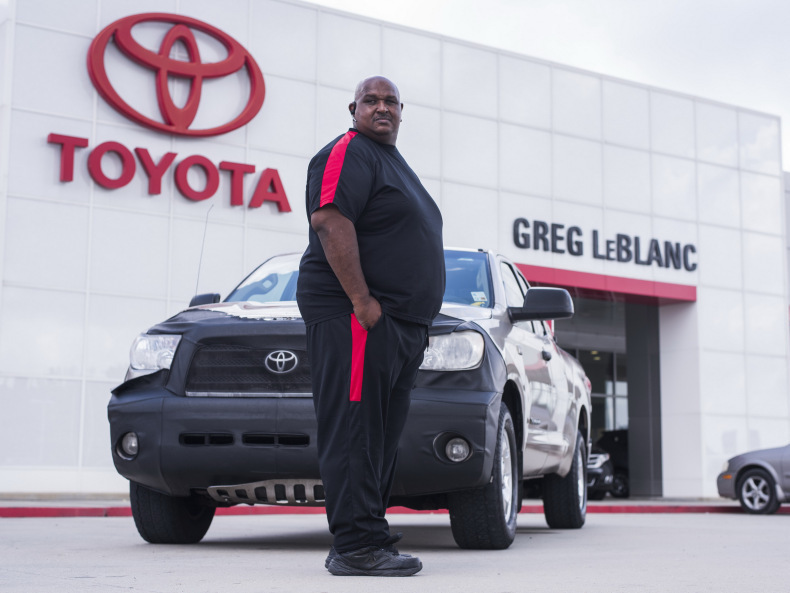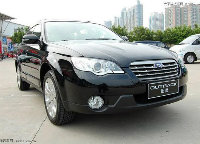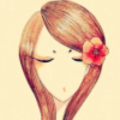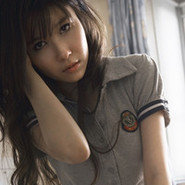Q
What is auto LSD of Toyota Tundra?
The Toyota Tundra's Auto LSD (Automatic Limited-Slip Differential) is a traction control tech that uses the brake system to mimic a limited-slip differential, mainly for rear-wheel-drive models to optimize power distribution on low-traction surfaces like muddy or slippery roads. When the system detects one rear wheel spinning, it automatically applies the brakes to that wheel, sending torque to the other wheel with grip to boost your ability to get unstuck. Unlike a traditional mechanical LSD, this one doesn't need manual activation from the driver. It's automatically off when you're in 4H or 4L four-wheel drive modes, but kicks in when you're in 2WD – perfect for those rainy season puddles around Malaysia or light off-roading trips. Just keep in mind, Auto LSD is designed for temporary slip situations. Hammering it hard for long stretches could overheat the brakes. If you're planning on regular off-road adventures, you might want to look at models with a mechanical LSD or an electronic differential lock instead. For pickup truck owners, understanding the different traction systems out there matters. A mechanical LSD, for example, is tough as nails but can cost more to maintain. Electronic systems like A-TRAC, on the other hand, use more complex sensors to manage wheel slip. Each tech has its pros and cons – it really comes down to how you'll use the truck and your budget.
Special Disclaimer: This content is published by users and does not represent the views or position of PCauto.
Related Q&A
Q
How many litres is a Toyota Tundra fuel tank?
The fuel tank capacity of the Toyota Tundra varies depending on different years and configurations. The latest models usually come with a large-capacity fuel tank of about 32.2 gallons (approximately 122 liters), which is suitable for long-distance driving or heavy load requirements. This design is quite common among pickup truck models, as it can reduce the frequency of refueling and enhance practicality. For users in Malaysia, although the Tundra is not a mainstream local model, its fuel tank capacity matches its powerful V6 or V8 engine, ensuring sufficient driving range, especially suitable for scenarios that require frequent long-distance driving or off - roading.
It should be noted that the fuel tank capacity may vary slightly depending on specific models (such as SR5, Limited, or TRD Pro versions) or market configurations. It is recommended to check the official specifications or consult the dealer before purchasing a vehicle to obtain accurate information. In addition, while a large fuel tank is convenient, it also increases the overall vehicle weight, which may slightly affect the fuel consumption performance. Therefore, in daily use, one needs to balance the actual needs with fuel economy.
Q
How long will a Toyota Tundra Hybrid battery last?
The hybrid battery life of the Toyota Tundra Hybrid typically ranges from 10 to 15 years, depending on usage conditions and maintenance. The tropical climate in Malaysia may have a certain impact on the battery life. However, Toyota's hybrid battery design has taken into account the adaptability to high-temperature environments. So, as long as regular maintenance is carried out, the battery performance can be maintained for a long time.
To extend the battery life, it is recommended to avoid exposing the vehicle to extreme high temperatures for a long time, regularly check the battery cooling system, and keep the battery in an appropriate charging state. The cost of replacing the hybrid battery is relatively high, but Toyota offers a battery warranty for up to 8 years or 100,000 miles (about 160,000 kilometers), which provides additional protection for car owners.
In addition, the advantages of hybrid technology lie in its fuel economy and environmental performance. For Malaysian car owners, this can not only save fuel costs but also reduce carbon emissions, which is in line with the global environmental protection trend. If you have more questions about hybrid technology, you can consult your local Toyota dealer, and they can provide more detailed maintenance advice and technical support.
Q
How many litres per 100km does a Toyota Tundra Hybrid use?
As a full-sized hybrid pickup truck, the fuel consumption of the Toyota Tundra Hybrid varies depending on specific driving conditions and configurations. The official data shows that its combined fuel consumption is approximately between 9.8 and 10.7 liters per 100 kilometers, which is a significant improvement compared to the traditional fuel-powered Tundra (about 13-15 liters per 100 kilometers). This is thanks to its hybrid system consisting of a 3.5-liter V6 twin-turbocharged engine and an electric motor, which can provide strong power while also taking fuel economy into account.
For Malaysian users, although the Tundra Hybrid has not been officially launched in the local market, the fuel consumption performance and hybrid technology of this vehicle are worth paying attention to. Especially considering the fluctuating oil prices and the increasing environmental awareness in Malaysia, hybrid vehicles may become a practical choice in the future.
It should be noted that the actual fuel consumption is affected by the load, road conditions, and driving habits. For example, frequent acceleration or high-speed driving may result in a fuel consumption close to 12 liters per 100 kilometers, while smooth driving or urban commuting may lead to a consumption of less than 10 liters per 100 kilometers. If Malaysian consumers are interested in hybrid pickups, they can also refer to the fuel consumption data of similar models such as the Ford F-150 Hybrid (about 9-11 liters per 100 kilometers) for a horizontal comparison.
Q
Is the Toyota Tundra a hybrid or non hybrid?
The Toyota Tundra currently offers both Hybrid and Non - Hybrid versions, depending on the model year and configuration. For example, the third - generation Tundra launched in 2022 first introduced the i - FORCE MAX hybrid system. It combines a 3.5 - liter V6 twin - turbocharged engine with an electric motor, capable of outputting 437 horsepower and 790 N·m of torque, significantly improving fuel economy and power performance. In contrast, the non - hybrid version still uses a traditional fuel engine.
For Malaysian consumers, hybrid models can balance performance and energy - saving during long - distance driving or when there are heavy - load requirements. However, it's necessary to check whether the relevant versions are introduced in the local market, as the vehicle configurations in Southeast Asian regions may be adjusted according to market demand. Hybrid technology has become a global trend for pickups. Competitors like the Ford F - 150 Lightning have also launched electrified options. It is recommended to consult local dealers to confirm the latest specifications before purchasing a car. At the same time, you can compare the differences in hybrid technologies among different brands. For instance, Toyota's THS system is well - known for its maturity and reliability, making it suitable for users who value durability.
Q
What caused the Toyota Tundra engine failure?
Engine failures in the Toyota Tundra can be caused by a variety of factors, including improper maintenance, oil - related issues, or cooling system malfunctions. For example, failing to change the oil for an extended period may result in insufficient lubrication, which can lead to internal engine wear. In Malaysia's hot and humid climate, inadequate maintenance of the cooling system can also cause the engine to overheat. Additionally, fuel quality and sensor malfunctions can affect the engine's performance.
For large - displacement vehicles like the Tundra, regular maintenance is particularly crucial. It is recommended that owners follow the manufacturer's maintenance manual, use the appropriate grade of oil and fuel, and regularly check components such as coolant and belts. Malaysian owners also need to be aware of the impact of the high - temperature and rainy environment on the engine. For instance, moisture can cause electrical circuit problems, and during high - load driving (such as towing heavy objects), it is essential to ensure that the cooling system is working properly. If you notice abnormal engine noises, a decrease in power, or warning lights on the dashboard, you should have the vehicle inspected and repaired promptly to prevent further damage.
Q
Is the Toyota Tundra a reliable car?
As a full-sized pickup truck targeting the North American market, the Toyota Tundra has a good reputation for reliability. Its body-on-frame structure and well-established V6/V8 powertrain have been long-term market-tested, showing stable performance in terms of durability. It's especially suitable for some users in Malaysia who need to deal with rough terrains or heavy-load requirements.
The Tundra is equipped with a high-strength steel chassis and an optimized suspension system, which can well adapt to the diverse road conditions in Malaysia. However, it should be noted that due to its large body size, it may take some time to get used to driving it on the narrow urban roads in Malaysia.
The maintenance of the Tundra is relatively convenient under Toyota's global service system. But as an imported model, the parts supply cycle and cost may be slightly higher than those of locally assembled models.
For Malaysian consumers considering buying a full-sized pickup truck, apart from reliability, they should also take into account the actual usage scenarios. For example, whether they need to frequently enter and exit underground parking lots or narrow streets, as well as the local tax policies for large vehicles. These factors will all affect the actual usage experience.
Q
Who Produces Toyota Tundra Engines?
The engines of the Toyota Tundra are mainly designed and manufactured by Toyota Motor Corporation itself. Its production base is located at the Huntsville plant in Alabama, USA. This plant specializes in producing V6 and V8 engines for large pick-up trucks and SUVs like the Tundra. These engines are well-known for their reliability and durability, and are particularly suitable for the multi-terrain and climate conditions in Malaysia. Toyota's continuous innovation in engine technology, such as the adoption of the Dual Variable Valve Timing-intelligent (VVT-i) system and direct injection technology, not only improves fuel efficiency but also reduces emissions, which is in line with the global environmental protection trend. For Malaysian consumers, understanding the manufacturing background and technical features of the Tundra's engine can help them make a wiser decision when purchasing a large pick-up truck. Meanwhile, Toyota's local after-sales service network can also provide reliable support for vehicle owners, ensuring that the vehicles remain in good running condition over the long term.
Q
Is the Toyota Tundra turbocharged?
The Toyota Tundra currently offers two types of powertrain options: naturally aspirated and turbocharged, depending on the model year and configuration. For example, the third - generation Tundra launched in 2022 introduced a 3.5 - liter V6 twin - turbocharged engine (i - FORCE MAX hybrid system) for the first time, replacing the old 5.7 - liter V8 naturally aspirated engine. This turbocharged engine can output 437 horsepower and 790 N·m of torque, balancing both power performance and fuel economy.
For Malaysian consumers, the application of turbocharging technology in large - displacement pickups is becoming more and more common. This type of engine can provide stronger torque at low speeds, which is especially suitable for load - carrying or towing needs. It can also adapt to the local hot climate because modern turbo systems usually come with efficient cooling solutions.
It should be noted that the configurations of the Tundra may vary in different markets. It is recommended to confirm the specific specifications through the official channels of Toyota in Malaysia. In addition, regular maintenance of turbocharged vehicles (such as oil changes and cooling system inspections) is crucial for maintaining performance. This kind of knowledge is very valuable for Malaysian consumers considering buying high - performance pickups.
Q
How long do Toyota tundras last?
The Toyota Tundra is renowned for its excellent durability and reliability. Under normal maintenance conditions, it can usually travel between 300,000 and 500,000 kilometers or even more. The specific lifespan depends on factors such as driving habits, road conditions, and maintenance frequency. For users in Malaysia, the hot and humid climate may have a certain impact on vehicle components like rubber seals and electronic systems. However, as long as you regularly change the engine oil, check the cooling system, and promptly address minor issues, the durability of the Tundra can still be guaranteed. The V8 engine and sturdy frame design of this vehicle also provide a solid foundation for its long - term use. It's worth mentioning that Toyota has a relatively well - established after - sales service network in Malaysia, and there is an abundant supply of original parts, which strongly supports the long - term use of the Tundra. If you're considering buying a used Tundra, it is recommended to focus on checking the engine condition, chassis rust, and maintenance records. Usually, a well - maintained used car can still offer reliable performance. Overall, the Tundra is a durable pickup truck suitable for Malaysian road conditions.
Q
Is the Toyota Tundra petrol or diesel?
Currently, the Toyota Tundra mainly offers gasoline engine versions in the Malaysian market. Specifically, it is equipped with a 3.5 - liter V6 twin - turbocharged gasoline engine (code - named V35A - FTS), which belongs to the Toyota Dynamic Force series and is paired with a 10 - speed automatic transmission. This powertrain focuses on the balance between high performance and low fuel consumption. Although the Tundra once had a diesel version in the North American market (such as the 5.7 - liter V8 diesel engine launched in 2008), the current models no longer offer the diesel option. For Malaysian consumers, the gasoline - powered Tundra is more suitable for the local usage environment, as the gas station network in Malaysia is mainly for gasoline, and diesel vehicles have to face higher road taxes and maintenance costs.
It's worth mentioning that in recent years, Toyota has gradually reduced the R & D of diesel passenger cars globally and shifted its focus to hybrid and hydrogen energy technologies. For example, the Camry and Corolla Cross available in Malaysia already offer hybrid versions. If users need a diesel pickup with stronger torque, they can consider the locally assembled Toyota Hilux. Its 2.4 - liter and 2.8 - liter diesel engines perform better in load - carrying and off - road scenarios.
Latest Q&A
Q
Which country does the XPENG G6 come from?
The XPeng G6 is a fully electric SUV from Chinese new energy vehicle brand XPeng. Headquartered in Guangzhou, XPeng is one of China's leading smart EV manufacturers, focusing on innovations in autonomous driving technology and intelligent cockpits. Positioned as a key model in its global strategy, the G6 features an 800V high-voltage fast-charging platform that significantly boosts charging efficiency. It also comes equipped with the XNGP intelligent assisted driving system, making it well-suited for Malaysian users who value long-range capability and smart tech features.
As a right-hand drive market, Malaysia has seen XPeng obtain local compliance certifications, hinting at a potential official launch in the future – offering consumers yet another compelling new energy option. The Malaysian EV market is currently gaining momentum, with not just Chinese brands but also international players like Tesla and BYD already establishing a presence. Local policies, including tax exemptions and charging infrastructure expansion, are set to further drive EV adoption. For consumers, it's advisable to compare factors such as range, charging network coverage, and after-sales support before making a purchase decision.
Q
Who is the owner of XPENG G6?
The XPeng G6 hails from Chinese EV maker XPeng Motors, a brand that burst onto the scene back in 2014 with a sharp focus on developing and building smart electric vehicles. As their midsize all-electric SUV, the G6 has been turning heads globally, thanks to its cutting-edge smart driving tech and impressive range. For Malaysian consumers, even though XPeng hasn't officially set foot in the local market yet, the brand's international performance is definitely worth keeping an eye on. The G6, in particular, showcases some really forward-thinking stuff in the EV space, like its XNGP intelligent driver assistance system and that 800V high-voltage fast charging tech.
Malaysia's a key player in Southeast Asia's automotive scene, right? If XPeng does decide to enter here down the line, it could mean more choices for local shoppers looking to go electric, and might even give the region's EV ecosystem a nice little boost. Let's face it, Malaysia's EV market is starting to pick up steam – big names like Tesla and BYD have already rolled in. Adding XPeng to that mix would only make things more interesting and give consumers even more options to chew on. But hey, as always, we'll have to wait for the official word on any concrete plans to bring XPeng over.
Q
What's the price of XPENG G6 in Singapore?
The XPeng G6 is currently priced at around SGD 150,000 to SGD 180,000 in Singapore, with exact figures varying based on configuration and optional extras. This all-electric SUV stands out for its smart driving tech and long-range capabilities, making it a solid fit for Singaporean buyers who love their tech. For our Malaysian readers, while XPeng hasn't officially entered the local market yet, keeping an eye on its overseas pricing gives you a useful benchmark when comparing local EV options—think the imported Tesla Model Y or BYD Atto 3. Since Singapore uses right-hand drive, just like Malaysia, if XPeng ever expands into Southeast Asia, Malaysian consumers should pay close attention to charging compatibility (it supports CCS2) and how well it handles tropical conditions, especially features like the battery thermal management system. One thing to note though: imported EVs in Malaysia often come with additional costs like tariffs, so the final on-the-road price might end up higher than in Singapore.
Q
What's the cruising range of XPENG G6
The XPENG G6, as a pure electric SUV, offers varying range figures depending on the trim level and testing standards. Topping out at approximately 755 kilometers under CLTC conditions, the long-range versions typically deliver between 580 to 700 kilometers, with the exact number hinging on battery capacity and driving conditions. For Malaysian users, the tropical climate might have a slight impact on battery efficiency, but XPENG's intelligent thermal management system does a solid job optimizing energy consumption, ensuring ample range for both daily commutes and longer journeys. Real-world EV range is influenced by several factors, including driving style, air-conditioning usage, and road conditions, so it's advisable for owners to utilize the vehicle's in-car energy consumption analysis feature to plan trips effectively. A standout feature is the G6's support for 800V high-voltage fast charging, which can add around 300 kilometers of range in just 10 minutes – a perfect match for Malaysia's growing network of fast-charging stations along highways. When considering an electric vehicle, beyond just range numbers, it's equally important to look into local after-sales service network coverage and the availability of charging infrastructure, as these factors significantly impact the overall ownership experience.
Q
Is XPENG G6 the luxury vehicle?
The XPENG G6 is a pure electric SUV from Chinese new energy vehicle brand XPENG. It shines when it comes to design, tech features, and performance, but let's be clear – it's not your traditional luxury car. The G6 sports a sleek, futuristic exterior and a clean, tech-forward interior. Throw in the advanced XPILOT driver-assistance system and some serious range, and it's definitely a strong contender in the EV market.
But here's the thing: traditional luxury cars tend to lean heavily on brand heritage, top-shelf materials, and that ultimate "wow" factor in ride and refinement. The G6, on the other hand, is more about showcasing cutting-edge tech and everyday practicality. It's right up the alley for shoppers who prioritize smart features and getting good value for their money.
Looking at the Malaysian market, the G6's electric powertrain and smart features could definitely turn heads among eco-conscious and tech-savvy buyers. However, if what you're after is that tried-and-true prestige and status symbol that comes with established luxury marques, you might want to cast a wider net.
The EV scene is moving at lightning speed these days, with tons of brands rolling out models that blend tech and luxury. At the end of the day, it all boils down to what you really need and how much you're looking to spend.
View MoreRelated News

Toyota Tundra Owner Achieves the Second Million-Mile Milestone
LienApr 18, 2025

Toyota Land Cruiser FJ will return on October 20, produced in Thailand, and sold globally
RobertOct 17, 2025

Toyota's comprehensive transformation: What changes will happen to Century, Lexus, GR, Toyota, and DAIHATSU?
Kevin WongOct 17, 2025

Zeekr 7X VS Toyota bZ4X: Which car, from China or Japan, is more futuristic?
Kevin WongOct 15, 2025

The Tiggo 7 PHEV, conversely, gains traction among younger buyers by offering a lower price point and a more technologically advanced package.
JamesOct 15, 2025
View More


















Pros
Cons